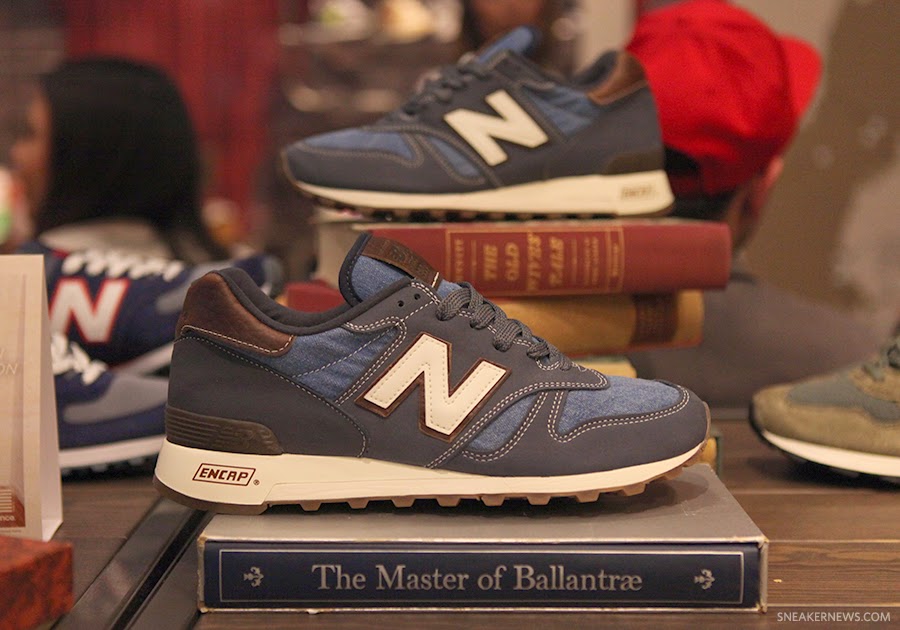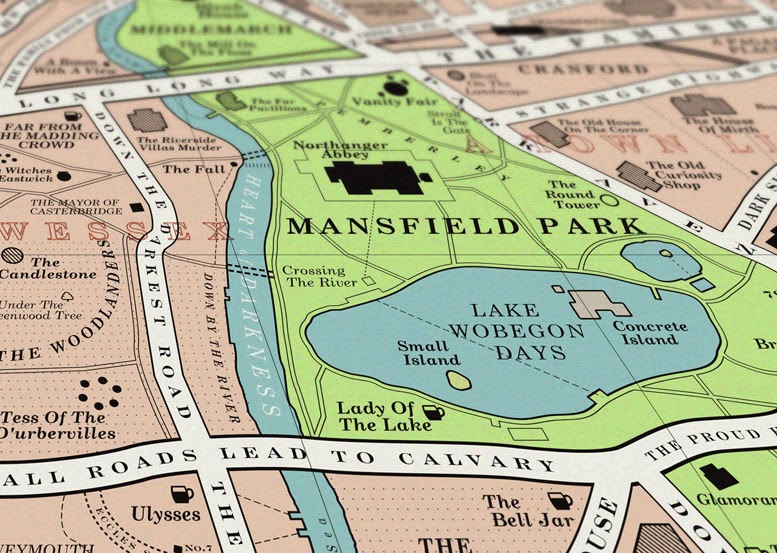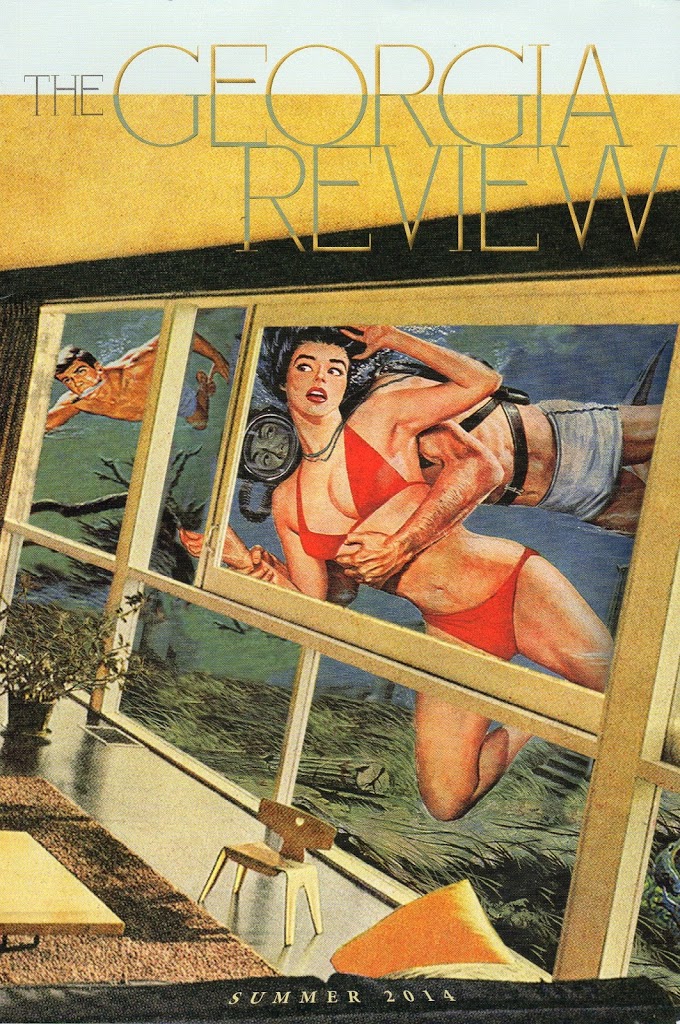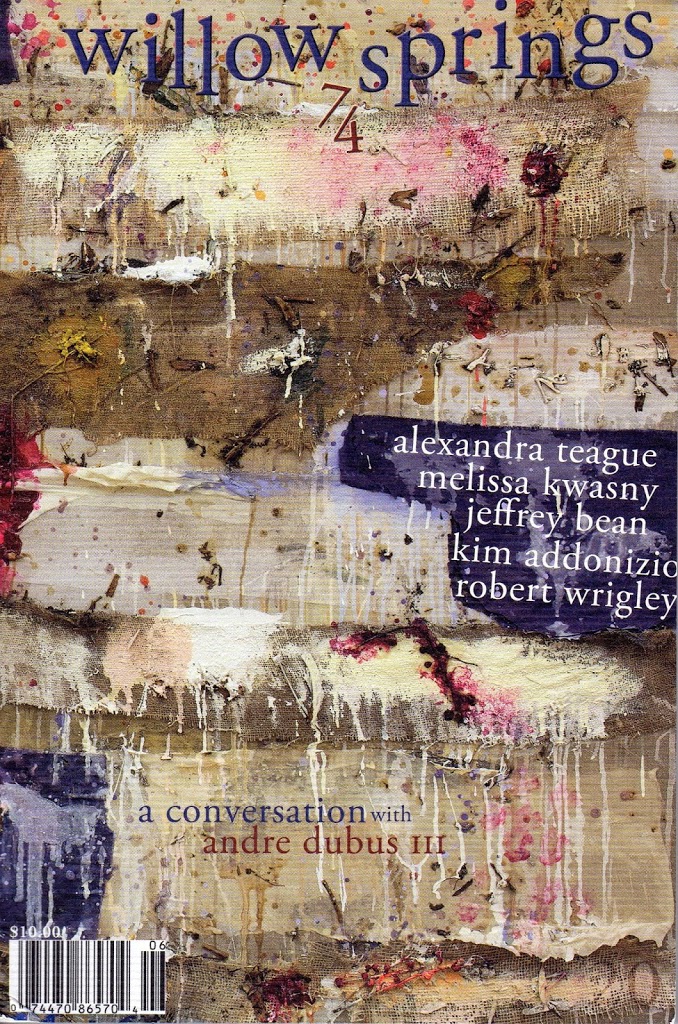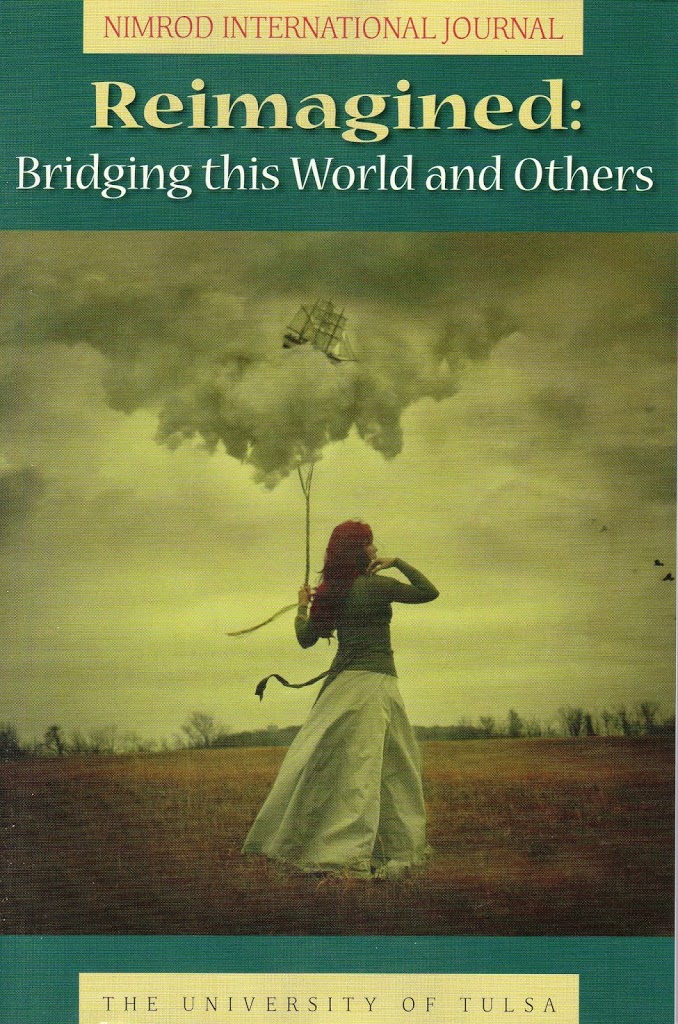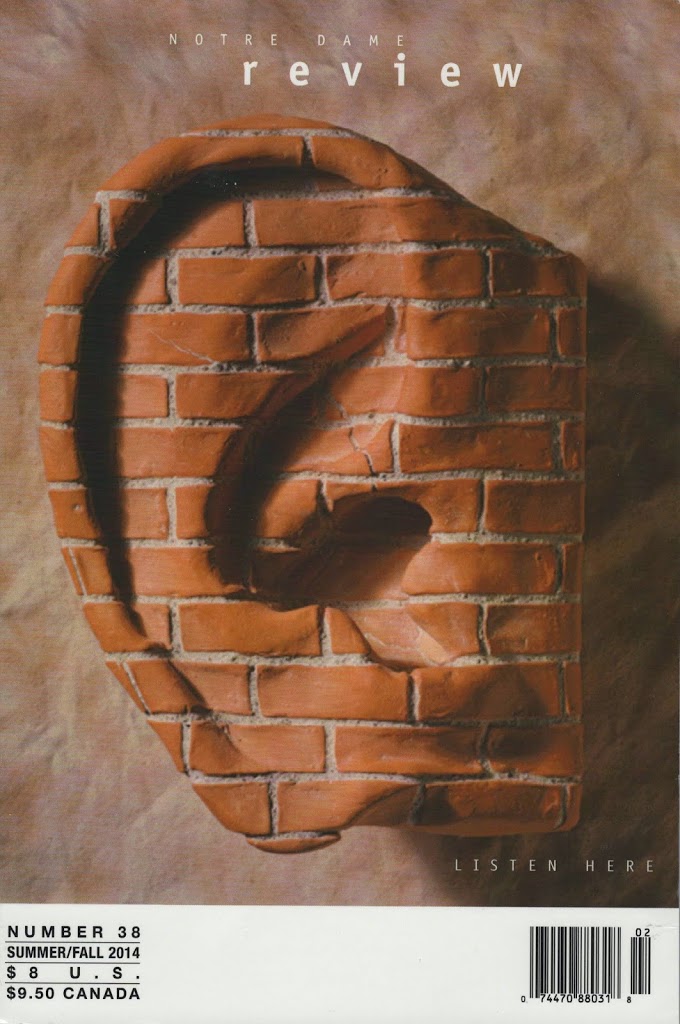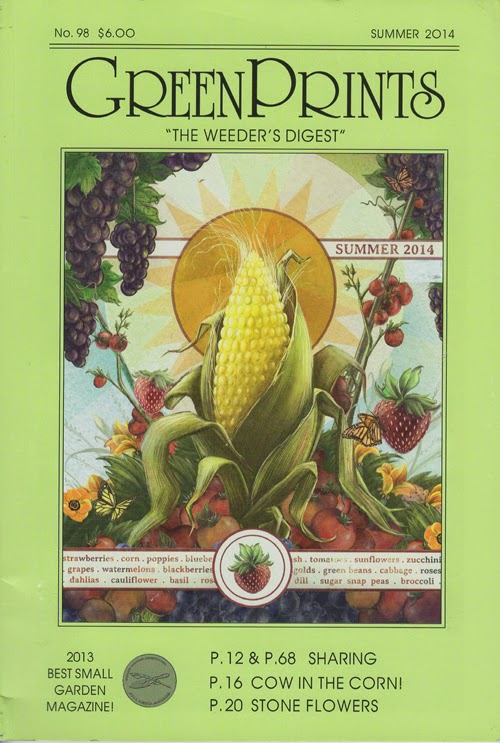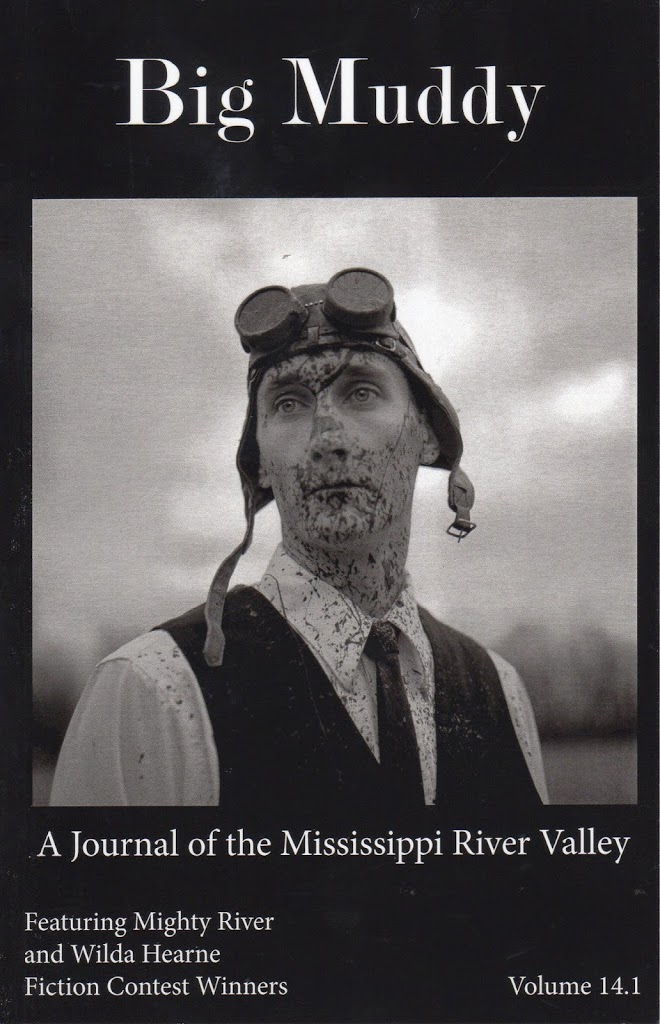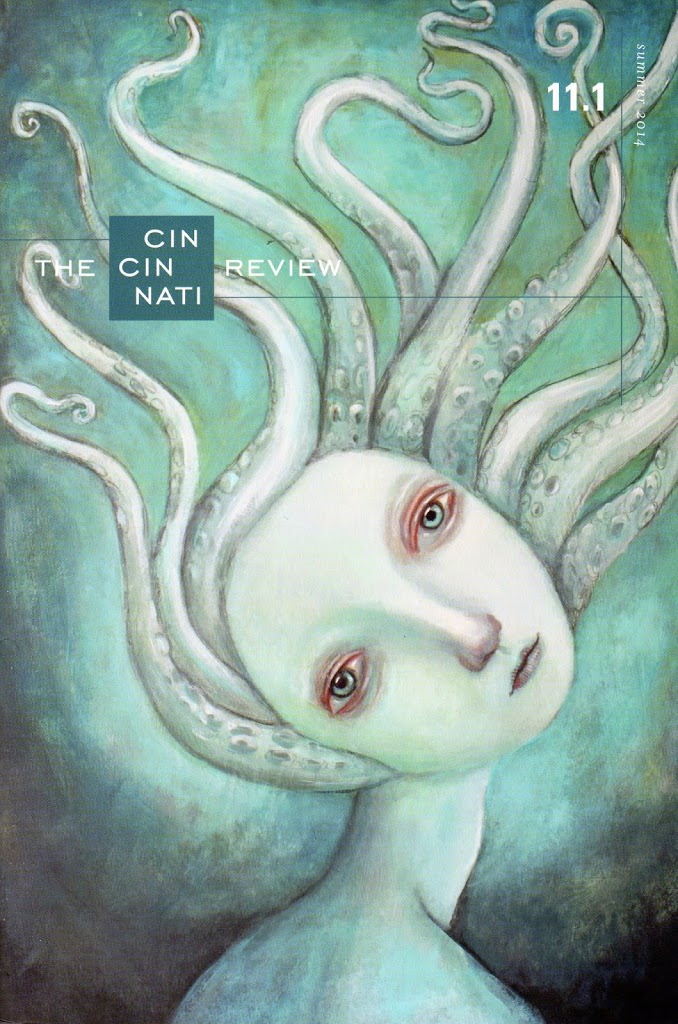Crazyhorse has been so good for so long, I opened the pages of this issue expecting to be bored by its brilliance. Instead, Crazyhorse Number 70 features stories that are so fascinating that boredom is out of the question. Crazyhorse does not rely on heavy plotting; the plots are, in fact, fairly mundane. It is the writing that contains much of the appeal. Fiction Prize Winner “Dog People” by Steve Mitchel tells the story of a divorced father and his children, love life, and ex-wife. Continue reading “Crazyhorse – Fall 2006”
NewPages Blog
At the NewPages Blog readers and writers can catch up with their favorite literary and alternative magazines, independent and university presses, creative writing programs, and writing and literary events. Find new books, new issue announcements, contest winners, and so much more!
Crazyhorse – Fall 2006
Spread the word!
Fairy Tale Review – 2006
We might think of ourselves as too sophisticated for fairy tales, that is, if the term conjures up Disney-ish recastings of classic tales; yet, fairy tales provide a body of common knowledge upon which to draw for literary allusions, and thus serve as currency even in our modern lives. Moreover, these tales recast archetypes and tap into our deepest fears: there are still beasts (literal and metaphoric) to conquer, the distressed who need a rescue, the hope of bliss—but at a cost. Continue reading “Fairy Tale Review – 2006”
Spread the word!
Five Points – 2006
A capricious God, a toad-killer with a nine iron, and a broke gambler whose only joy in the world is Howard Stern, walk into a bar called Five Points. The only question is, why aren’t you there already? This issue serves up poetry ranging from Charles Simic’s “Metaphysics Anonymous” (“The unreality of our being here, / an additional quandary we are cautioned / not to concern ourselves”) to Richard Howard’s challenging but compelling re-vision (“Look again, look closer.”) of Peter Paul Reuben’s painting, “The Rape of the Daughters of Leucippus by Castor and Pollux.” Continue reading “Five Points – 2006”
Spread the word!
Georgia State University Review – 2006
This issue of GSU Review showcases the winners and finalists of their 2006 fiction and poetry contests, as well as the art of Len Kovsky on the covers and six full-color pages inside, rounding out this solid collection. Taking first place in fiction was Midge Raymond’s “Forgetting English,” about an American teacher trying to start again in Taiwan. But in a place where “[…] amid the belief that souls are lost and lonely, that they drift through an eternal purgatory, appeased with food, drink, entertainment, gifts […]” she is led inevitably to face her own haunted past and decide what to do with her future. Continue reading “Georgia State University Review – 2006”
Spread the word!
Green Mountains Review – Fall/Winter 2006
A good looking, glossy magazine, Green Mountains Review puts a strong emphasis on poetry. In fact, the best story in this issue is written by Therese Svoboda, who – not surprisingly – splits her time between prose (four novels) and poetry (four collections). The work “355,” about spies in the American Revolution era, contains the type of subject matter that most writers would spend half the story setting up so that they could splash their research all over the page. Continue reading “Green Mountains Review – Fall/Winter 2006”
Spread the word!
Hunger Mountain – Fall 2006
“If this were another country, somewhere / in Latin America, say, or Eastern Europe, I could write lines like, / My country, take care of your light!, as Neruda did, / I could write, I am begging you the way a child / begs its mother, as he did… Oh, to live among those writers / who make unabashed use of vodka / and exclamation marks!” This is how Eleanor Stanford’s “Political Poem” goes, and it begs to be anthologized for its treatment of motherhoods and motherlands. James Tate and Dara Weir, two poets in constant conversation, are also interviewed and their poems prominently placed. Continue reading “Hunger Mountain – Fall 2006”
Spread the word!
The Literary Review – Fall 2006
The Literary Review’s editors chose to begin their fiftieth anniversary year with a translation issue. They also chose Robert Pinsky to write an introduction to translation. And what an introduction it is. I have been a fan of Pinsky since I first read his poem “Shirt” for a workshop. That the former poet laureate has also translated Dante’s Inferno and Czeslaw Milosz’s The Separate Notebooks enables him to speak like the sage that budding translators need. “Translation is also the highest, most intense form of reading,” says he, in “On Translation.” For Pinsky, it is “also the only art that is like writing. Continue reading “The Literary Review – Fall 2006”
Spread the word!
Natural Bridge – 2006
In its sixteenth issue, Natural Bridge features a special section “in response to women’s writing.” The “general” pages feature poems such as Paul Hostovsky’s “People in Pediatric Oncology,” Rachel Hadas’s “The Middle Way,” and Andrew Sage’s “Paradise.” Each introduce their subject while illuminating it, tasks that seem just as vital in works explicitly responding to a text or writer. Natural Bridge’s most effective responses do this double duty. Continue reading “Natural Bridge – 2006”
Spread the word!
Pleiades – 2007
I sensed what Anis Shivani’s argument would be in his essay, “Why is American Fiction in Its Current Dismal State?” before I flipped to it: lack of risk-taking fiction. Shivani’s tone in the essay is not sad, which saves the essay from becoming victim of its own subject. His attacks are scathing – “Fiction writing is the way it is because America has turned it into the last great Fordist model of production.” Elsewhere he argues that “the decline of American fiction is a sign of the decline of elite liberal consensus. The vacuum in political ideology is being filled today by an anti-politics, of personality and charisma…” Continue reading “Pleiades – 2007”
Spread the word!
Prairie Schooner – Winter 2006
Prairie Schooner is one of the few journals with impeccable credentials, having disappointed few writers and readers. This issue is no exception. Continue reading “Prairie Schooner – Winter 2006”
Spread the word!
The Sewanee Review – Fall 2006
It’s fitting that the journal whose health T.S. Eliot once lauded as an indicator of the world of periodicals should publish such an issue. The Sewanee Review’s issue comes subtitled “A Salute to British and American Poetry.” The opening pages are a list of books reviewed, including Wendell Berry’s Given, W.D. Snodgrass’s Not for the Specialists: New and Selected Poems, and the much lauded Adam Kirsch volume, The Wounded Surgeon. There’s a menagerie of material here. Continue reading “The Sewanee Review – Fall 2006”
Spread the word!
The Southern Review – Winter 2007
In the introduction to the seventeenth installment of the “Writing in the South” series, Editor Bret Lott questions the past, present and future of Southern literature through the lens of Walter Sullivan’s essay in the original “Writing in the South” issue, thirty-nine years ago. Sullivan wrote, “[…] the new Southern writer must be something other than Southern: his faith and vision must be fixed somewhere beyond the Southern experience: he must find his own source. Continue reading “The Southern Review – Winter 2007”
Spread the word!
subTerrain – Number 44, 2006
You could try cocaine, or you could read subTerrain. This Vancouver-based magazine is rough around the edges but compensates with winning, dark intense fiction and warm, intelligent nonfiction and poems. The piece I can’t stop talking about in this issue is “The Shark Tumour Collection,” a short story by Jill Connell. An 18-year-old pet store employee with cancer decides sharks, an animal made entirely of cartilage, would be the perfect anti-cancer talismans. Continue reading “subTerrain – Number 44, 2006”
Spread the word!
Poetry South – 2010
In the 64 pages of this issue, John Zheng gives us 27 poets and 49 lyric and narrative poems; not surprisingly, one page is often enough to include the entire poem. Brief bios of contributing poets appear at the end, along with a page to mention a handful of noteworthy books of poems published since 2007 in the U.S. Continue reading “Poetry South – 2010”
Spread the word!
New Balance Line of Literary Sneakers
No kidding. New Balance has announced a line of shoes called the “Authors Collection,” with color schemes inspired by American novelists and their works. Reminiscent of old hardback book covers, the styles are “earthy” in their color schemes. Almost more fun than the shoes is reading the comments on this new line from Twitter feeds:
JamesAllder: “I guess these shoes are designed for writers. On behalf of all writers, may I just say that we write in our socks. Thanks for thinking of us, though.”
aarontpratt: “Nothing quite says ‘I’m a casual yet cultured 30- or 40-something male’ like these. Reading Hemingway while grilling steaks, etc.”
JenHoward “Kickin’ it with Papa.” & “This is why we need English majors!”
Spread the word!
Ghost Town – 2010
Again, there are no editorial musings, just a hipper than anything dive into the fray. One of the first is a great poem by Jared Stanley, called “Legitimate Dangers”:
A _____ stirs the thicket.
I am cherry alive, the little girl sang.
Fleas alight from this line.
Now it’s all our celebration, right?
I’ve got to interrupt you for a second;
this is my index finger talking.
Himilce Novas’s “Painting Life Over” is a sad story, filled with memories of a youth spent amongst parents who fought constantly, and the narrator who wishes to start life over: “Me? In my mind, I’m not in the picture at all. I’m just looking at it, a little shaky, praying that the fighting will stop and that Mr. and Mrs. Pepino, the elderly couple who live right next door, also in the fifth-floor walk-up, are really as deaf as they pretend to be.” Continue reading “Ghost Town – 2010”
Spread the word!
The Book Map
Created by the artists of Dorothy, The Book Map is an artistic rendition of a street map made up from the titles of over 600 books from the history of English Literature. The Map includes classics such as Mansfield Park, Northanger Abbey, Bleak House, Vanity Fair and Wuthering Heights as well as 20th and 21st Century works such as The Waste Land, To the Lighthouse, Animal Farm, Slaughterhouse 5, The Catcher in the Rye, The Wasp Factory, Norwegian Wood and The Road.
The Map, which is loosely based on a turn of the century London street map also includes fictional areas dedicated to the works of Thomas Hardy, Virginia Woolf, Tolkien, Harry Potter and a children’s literature district featuring such classics as The Railway Children, Charlie and the Chocolate Factory and Where the Wild Things Are. There’s an A-Z key at the base of the Map listing all the books featured along with the author’s name and the date first published.
Spread the word!
Special “Strange and Wondrous Pairings” Section in The Georgia Review
“Strange and Wondrous Pairings” is the feature section of The Georgia Review‘s most recent issue. The five included essays “all raise questions,” writes Editor Stephen Corey, “very different questions—about the people or characters they bring together in quite unexpected ways. These works were not commissioned; they appeared by chance during the past two years and built for us, unbeknownst to their authors, a distinctive community.”
Martha G. Wiseman’s “Dr. No Meets J. Robert Oppenheimer”
Corey writes, “Wiseman revisits this movie villain and this real-life celebrity scientist while looking through the prism of her father, the actor Joseph Wiseman, who played the two in film and on stage, respectively. She also looks through in the other direction, seeing her father as he was reflected in the roles he played—and didn’t play—and herself as she was influenced by, and influenced, this man of many faces, an actor of sufficient repute in the early 1960s that the director of Dr. No ‘needed someone with a name, a presence,’ to counterbalance that newcomer, Sean Connery.”
Brandon R. Schrand’s “Finding Emily & Elizabeth”
Corey writes, “Schrand received from a neighbor the gift of a 1944 edition of Emily Dickinson’s poems . . . when he first sat down to peruse this particualr volume he immediately discovered, taped over one of the poems and surrounded by handwritten notations, a photograph of a teenage girl named Elizabeth who appeared to be dead . . . his Dickinson collection proved to be filled with many other annotations, all apparently by the young Elizabeth’s mother, and so his sought-after education becomes a doubling of his original intention.”
Albert Goldbarth’s “Two Characters in Search of an Essay”
Corey asks, “Who else would ferret out, and then present with wild and beautiful prose, the vital connections between John Keats and Clyde Tombaugh (the young man who discovered the now-maligned Pluto), and—remember, this is Albert Goldbarth—would also teach us countless other remarkable things along the way?”
Marianne Boruch’s “Pilgrimage”
Corey writes, “Boruch’s ‘Pilgrimage’ takes us, as no other tour guides have ever done, to and through the homes of Keats (on the Isle of Wight) and a seminal American poet, Theodore Roethke (in Saginaw, Michigan).
Brian Doyle’s “Sam & Louis”
Mark Twain and Robert Louis Stevenson had a single face-to-face meeting, “but one whose substance went unreported.” Corey writes, “Doyle, an aficionado of both men’s work, asks ‘But what did they say?’—and proceeds to reconstitute what was very likely several hours of the most scintillating talk in history.”
Spread the word!
Baltimore Review Summer Contest Winners
The Baltimore Review editors have announced and congratulated the winners of their summer contest, the theme of which was “How To.” Judged by Michael Downs, the contest was open to poetry, short stories, and creative nonfiction. The issue itself features this same theme. Here are the winners:
First Place
Diana Spechler’s “How to Love a Telemarketer”
Second Place
Ginny Hoyle’s “How to Breathe”
Third Place
Shirley Fergenson’s “How to Leave a Garden”
Congrats. Read the winning pieces and the complete issue online here, featuring Erika Kleinman, Evan Beaty, Douglas Cole, Meng Jin, Marjorie Stelmach, Carolyn Williams-Noren, Justin Brouckaert, James Norcliffe, and more.
Spread the word!
Required Reading :: Dear Editor, Dear Writer, PLEASE STOP!
James Duncan’s blog post Dear Editor, Dear Writer, PLEASE STOP! should be required reading for every writer sending out works for publication, for every publication accepting and rejecting writing, for every teacher, every student – cripes! JUST EVERYBODY PLEASE READ THIS!
A well-published author himself as well as an editor, Duncan has learned the intimacy of the good, the bad, and the ugly of the relationship between editors and writers – either having experienced it himself or having heard about it from others. His insight goes well beyond the response times and cover letter content. Such issues as editors giving rude rejections and (“on the flip side” for each topic) writers responding rudely to rejection, extraneous e-mails from both editors and writers, complicated guidelines and writers not following guidelines, closing submissions and over submitting, and many more such issues.
I’ve already had a side conversation with Duncan about one of his issues here, and we agree, there are some tough lines to walk in our business of writing and publishing. It would seem much of his advice is common sense and common courtesy. But it’s not that easy when new writers are trying to learn the publishing arena, and new editors likewise – or even established writers and editors wondering what they’re “doing wrong” or how to improve their professionalism. For all these reasons and more, Duncan’s essay should be the go-to guidelines for all writers and editors.
Spread the word!
Amy Stolls, NEA Director of Literature
 |
| Amy Stolls. Photo by Carrie Holbo |
Amy Stolls, author of the Palms to the Ground and The Ninth Wife, former literature professor at American University, and environmental journalist covering the Exxon Valdez oil spill, has been appointed Director of Literature of the National Endowment for the Arts. Stolls has served as acting director since May 2013, and has been with the NEA literature office since 1998.
Stolls says of her appointment: “To be part of the literary community—that passionate, wonderful lot of writers, teachers, publishers, editors, presenters, librarians, translators, and more who work tirelessly on behalf of books and reading—is an honor. To be in a position to help this community is a gift. I have always believed deeply in the NEA’s mission; I look forward to carrying out that mission as best I can in my new role.”
Read more on NEA News.
Spread the word!
Conversation with Andre Dubus III
In the Fall 2014 issue of Willow Springs, Elizabeth Kemper French and Joseph Salvatore have a conversation (from March 2013) with Andre Dubus III, author of New York Times bestsellers House of Sand and Fog, The Garden of Last Days, and Townie. The interview is lengthy and worth every word.
It begins with conversation about the digital age, which Dubus detests. “I don’t like modern life,” he says, “with these gadgets.” And although his publisher made him get a Facebook page, he doesn’t plan to ever update it (though points out that there is nothing wrong with others doing so). “It’s a philosophical turning-away-from, and a temperamental turning-away-from,” he says. “The older I get, the more simplicity I want. I don’t think these things have helped us. I think they’ve made us little rats, made us pay attention to little, stupid shit.”
And because the writing process is different for everyone, Dubus must write by longhand, not putting on the computer until it is completed: “I need the physical intimacy of flesh, blood, bone, wood, paper. It helps me enter the character.” He goes on to explain the necessity for him to slow down when writing, as writing longhand forces you to do:
“There’s a great line from Goethe: ‘Do not hurry. Do not rest.’ Some people say, ‘I need the computer, because my ideas are so fast.’ I say, ‘Ideas? I don’t trust ideas. Ideas are just ideas.’ I trust the other stuff. I love the line from Flannery O’Connor, from Mystery and Manners: ‘There’s a certain grain of stupidity the writer of fiction can hardly do without, and that’s the quality of having to stare.’ …”
It’s a quality interview, both entertaining and insightful. It’s worth every one of the almost 30 pages it takes up of the journal.
Spread the word!
Cellist Daniel Sperry Makes Music Out of William Stafford Poetry
Daniel Sperry, a quirky 59-year-old cellist, composer and spoken word artist, from Ashland, Oregon has recently received permission through the Permissions Company of Mount Pocono, PA, on behalf of the William Stafford Family Trust, to undertake a musical body of work with the poetry of William Stafford, America’s first poet laureate, as its centerpiece.
The end result of the project is that people will come to a show that is incredibly entertaining, deep, and joyful. Stafford’s words are just the vehicle to carry a thread of discovery about life, and the music will carry that feeling. Each member of the audience will leave transformed from the connection to that special quality that comes through the words and through the music. Daniel’s mission is to bring that sense of connection that the world needs now, through music and great poetry, sung and played by vibrant, masterful musicians.
Daniel recently completed 200 concerts in living rooms around the country, traveling solo in his 200 Toyota Sienna van, couchsurfing along the way, sharing his original cello music and the poetry of Rumi, Hafiz, David Whyte, William Stafford and others. His current catalogue of creative work consists of two spoken word CDs and four instrumental CDs.
The new project focuses on the poetry of Willam Stafford, the reknowned American poet and author of some 20,000 poems. Stafford would have been 100 this year, and his poetry is being celebrated all over the world.
The goal of Daniel’s Stafford Project is production of a CD, which will include 12 of Stafford’s poems, the formation of a band with four vocalists, three cellos, mandolin, banjo, piano and upright bass and the production of a video featuring the new group. The band will be touring in performing arts centers around the country. This production is being funded by a Kickstarter Crowdfunding Campaign.
The funding through Kickstarter ends July 31st. The goal is to raise $6000 by then.
The recording will take place both in Nashville, TN, and in Ashland, OR.
Daniel’s goal is to make great poetry available as a performance art in a fun, beautiful, entertaining setting that can be enjoyed by an audience of all ages.
Spread the word!
Glimmer Train Short Story Award for New Writers Winners :: July 2014
Glimmer Train has just chosen the winning stories for their May Short Story Award for New Writers. This competition is held quarterly and is open to all writers whose fiction has not appeared in a print publication with a circulation greater than 5000. The next Short Story Award competition will take place in August. Glimmer Train’s monthly submission calendar may be viewed here.
1st place goes to Caro Clark [pictured] of Wakefield, RI. She wins $1500 for “The Kind I Really Am” and her story will be published in Issue 94 of Glimmer Train Stories. This is Caro’s first published story.
2nd place goes to Robert Kirkbride of Chicago, IL. He wins $500 for “These Things.”
3rd place goes to Gaetan Sgro of Chicago, IL. He wins $300 for “We Are All Snowflakes and Cities.”
A PDF of the Top 25 winners can be found here.
Deadline soon approaching! Very Short Fiction Award: July 31
This competition is held quarterly, and 1st place has been increased to $1500 plus publication in the journal. It’s open to all writers, with no theme restrictions, and the word count must not exceed 3000. Click here for complete guidelines.
Spread the word!
Lit Mag Covers :: Picks of the Week
Cover art for this issue of The Cincinnati Review is called Shallow Water, a 16in by 20in acrylic by Felicia Olin who also contributes a portfolio within the issue, all included pieces worth discovering.
—————————————————————
The cover art for the “Reimagined: Bridging this World and Others” issue of Nimrod is a photograph by Brooke Golightly with just as an enticing of a title, “Beneath the Skirt of the Sea.”
—————————————————————
Notre Dame‘s “Listen Here” issue features cover art by Gail Schneider. On the front cover, Right Ear made with clay and mortar. ” terra cotta. I wasinterested in the contrast of the soft sensuousness of the human body, the fragility of body parts such as the heart and ear and the impenetrable stability of brick,” she writes.
Spread the word!
“No Typos Hear!”
“No Typos Hear!” is how Pat Stone titles the editor’s note for the current issue of GreenPrints. He announces that for almost two decades, Ricki and Michael Cochran have been proofreaders for this magazine. As they know have a lot going in their lives, including seven grandchildren, they are officially stepping down; this was their last issue. As such, Stone puts forth his sincere thanks and states that the first who finds a proofing error (beyond the obvious one in the title) in this issue will receive a free one-year subscription to the magazine.
Spread the word!
Mighty River and Wilda Hearne Contests
Big Muddy opens Volume 14 Number 1 with the winners of the Wilda Hearne Flash Fiction Award and the Mighty River Short Story Award. Here’s a glimpse of each:
Wilda Hearne Flash Fiction Award
Robert Garner McBrearty’s “What Happened to Laura?”
I’m in a coffee shop on an afternoon in spring when a man at a table near the creamers picks up his smart phone and says in a loud voice, “John? Doug here. Laura is back. She’s pissed off. She’s a really pissed off person…I don’t know what she’s pissed off about…Yeah, that’s right…I’m taking her to the doctor today…It’s a hard call, they might…That’s good, that’s good…She’s real angry, she’s real brutal, she’s real cutting…Yeah, that’s right…I don’t know if I’m going to have to hospitalize her or not…It’s brutal, it’s real brutal, I’ll call you after we see the doctor…Okay, thanks, right…That’s good.”
Doug signs off. But he’s back on a moment later. “Bob? Doug here. Laura came back…Well, she’s pissed off, she’s real pissed off…That’s good, that’s good…Well, she’s real pissed off…We’re going to see the doctor in about twenty minutes…Obviously…Excellent…Good idea…I’ll hide everything…”
He hangs up. We all look up from our tables to meet his widened eyes. A tall man rises up. He points a finger at Doug’s chest. “I want to know what’s wrong with Laura,” he says.
Mighty River Short Story Contest
Catherine Browder’s “The Canine Cure”
Some days there’s a bit of a flurry when I step on the elevator with the girls. Lola takes the lead, followed by Rusty, and then Didi. I bring up the rear. As we assemble inside, an orderly wearing hospital scrubs pulls himself up to his considerable height and scowls, never taking his eyes off my trio. A young Asian woman in a lab coat takes a small step back. I raise a finger. My three promptly sit, and I punch the button for the third floor.
“Believe it or not,” I tell my audience, “these girls are here to work.” I give them my broadest professional smile. The man cracks a joke while the young woman titters uncomfortable. Neither has noticeably relaxed. The girls remain seated, their great brown eyes traveling from face to face and then back to mine. In the enterprise that looms ahead I am certain of only one thing: My troupe is obedient and well trained.
Spread the word!
Robert and Adele Schiff Awards
The current issue of The Cincinnati Review features a special section for the winners of the Robert and Adele Schiff Awards in prose and poetry. There is no commentary on the pieces, so you’ll have to figure out why they won for yourself! Here is the opening of each:
Karrie Higgins’s “The Bottle City of God”
My first summer in Zion, the Mormons deliver a latter-day miracle.
A grasshopper plague is encroaching on a town somewhere out there in the vast Utah emptiness, on the other side of the Great Salt Lake: two thousand grasshopper eggs to the square foot, little exoskeletons bursting into being from thin air, like popcorn kernels on a hot burner.
Local News Channel 4 bears witness: Every ten years, the grasshoppers come. Like clockwork.
As an outsider, a Gentile, I have made this reporter my hierophant. The Mormons have their Prophet, Seer, and Revelator, and I have a newsman. I never watched local news before moving here.
The plague is supposed to happen.
Backyards are popcorn machines, pop, pop, pop.
Insecticide has failed us.
Martha Silano’s “The World”
The world so big, so big and beyond, tumbleweed so turbulent in the wind,
the cormorants of the world so sunning themselves on shit-stained piers.
World a big son with his big-boy accretion, his magnesium need
for the screen, for his Xbox lithosphere. The world and the calderas
of the world and the peaks of the world with their toothsome fissures
toppling the calm. The world with its spiral notebook of incomprehensible
Spread the word!
2 Bridges Review – 2013
2 Bridges Review is a young journal that consistently shows a lot of promise; it is apparent that the staff works hard to find the best work from both new and established poets. This issue puts forth poetry, fiction, nonfiction, art, and photography where “the real and the imagination fuse.” Continue reading “2 Bridges Review – 2013”
Spread the word!
The Austin Review – January 2014
The first sentences of the work in this issue of The Austin Review are some of the best I’ve read. Each one drew me in a little differently but with a similar level of intensity. And although the first lines of all nine pieces are of equal measure, here are a few examples: Continue reading “The Austin Review – January 2014”
Spread the word!
Black Magnolias – Spring 2014
The cover of the spring issue of Black Magnolias: A Literary Journal is striking, bold, and black & white, moving across the page displaying Alex Nodopaka’s Speed Wind Black Magnolias. It suggests an issue with writing that inspire movement and reaction; the issue does not disappoint on this account. Continue reading “Black Magnolias – Spring 2014”
Spread the word!
Bop Dead City – Spring 2014
Bop Dead City is a humble, independent, quarterly literary magazine. At first glance it may seem to lack the finesse of larger magazines, but upon closer inspection, the reader will be pleasantly surprised to see interesting cover art as well as poetry and fiction that can and will inspire us all to read more or to pick up a pen and begin to write. This issue focuses on work surrounding loss and attempts to grasp onto the ever-elusive intersection of what was, what now is. Continue reading “Bop Dead City – Spring 2014”
Spread the word!
The Cape Rock – 2013
This journal is a lean sixty-seven pages of poetry. No editor’s remarks, no advertisements or indices, no author bios, no other genres. The state where each author lives is identified in the table of contents and that is all. The attention in The Cape Rock is all on the work. Continue reading “The Cape Rock – 2013”
Spread the word!
Clare Literary Journal – Spring 2014
Clare, a literary journal produced by students and faculty at Cardinal Stritch University in Milwaukee, has recently moved from a print publication to an online endeavor, and this is its second issue in that form. Continue reading “Clare Literary Journal – Spring 2014”
Spread the word!
Communion – June 2014
Communion is a brand new online literary journal, this being their first issue, just published this month. They look for and publish work that moves them either emotionally or intellectually but really aim for work that “reflects the concept of communion—with others, self, the world at large.” And from reading the first issue, I’d say they are hitting the ground running with this goal. Continue reading “Communion – June 2014”
Spread the word!
Fairy Tale Review – 2014
Fairy Tale Review maintains its fanciful theme well, but its significance as a literary document exceeds whimsy: the authors transform modern literature, spackling any clichés or invention with language, philosophy, and critical energy. Continue reading “Fairy Tale Review – 2014”
Spread the word!
Hiram Poetry Review – Spring 2014
Whether written in traditional free verse or veering off into experimental territory, the poems in the latest issue of theHiram Poetry Review are frank, high-spirited, and self-assured. Featuring twenty-one poems from nineteen different poets, this slim volume benefits from a clear editorial vision favoring “poems that exhibit excellence with flaws rather than general competence.” Continue reading “Hiram Poetry Review – Spring 2014”
Spread the word!
Iodine Poetry Journal – Spring/Summer 2014
This 15th Anniversary Issue of Iodine Poetry Journal is a collection of unassuming poems by talented writers. The poems are deceptively simple, written with an ease that belies their metaphoric skill. Each poem imagines a story, a picture, a memory, a season, a way of thinking or living, encapsulated in lines of distilled thought that somehow feel like one collective voice of humanity speaking for itself. Continue reading “Iodine Poetry Journal – Spring/Summer 2014”
Spread the word!
Juked – Spring 2014
The editors of Juked state on their website that they do not adhere to any particular themes or tastes, but in this year’s issue, one might perceive a predilection for experimentation. Michelle Latiolais opens the volume with “Out,” which cannot be characterized in a single clause, but links together a complicated narrative almost without any kind of literary seam showing. Reportage of a world caramelized with sex, friendship, and the idiosyncrasies of place and a specific time sets the work apart in a shifting carnival; one is suspended between effective ‘reportage’ and the sequined world of the author’s imagination. Continue reading “Juked – Spring 2014”
Spread the word!
Kestrel – Fall 2013
The cover image of Kestrel’s recent issue is a mixed media collage of photo transfer, ink, and colored pencil suggesting a window through which we’re invited to peer deeper into “a story” (the artwork’s title), the text which, along with “1934,” appears as part of the illustration. Artist Julie Anne Struck’s arresting compositions are featured inside the journal as well, collaging image, paint, pencil, text, and texture to results akin to a two-dimensional Joseph Cornell assemblage perfect for the paginated exhibit and super appealing as cover art. As illustrations that beg the viewer to imagine their narratives, what could be more appropriate for this issue’s strong collection of prose and poetry? Continue reading “Kestrel – Fall 2013”
Spread the word!
MAKE – Fall 2013
The fourteenth issue of MAKE Literary Magazine focuses on visual culture, toying with the ideas of perception and image. The journal itself is stunning—a mix of colored, white, and black pages that proclaims on its front, “All colors, are, in fact, here.” It’s a line plucked from Cristina Rivera Garza’s poem “I. Despejar” or “I. To Clear.” And it fits perfectly, given that MAKE has a little bit of everything—poetry, fiction, nonfiction, book reviews, artists’ portfolios, an interview, translations, and comics are all represented and flow together flawlessly for fulfilling, well-rounded read. Continue reading “MAKE – Fall 2013”
Spread the word!
Minetta Review – Fall 2013
According to its inviting website, Minetta Review is “a student-run publication at New York University [which also considers] writing and artwork from all over the country, and . . . [has] even published international submissions.” It’s the oldest literary publication at NYU; this is the publication’s fortieth anniversary. Continue reading “Minetta Review – Fall 2013”
Spread the word!
New Purlieu Review – Summer/Fall 2013
This issue of online journal New Purlieu Review is themed “Family” and indeed asks important questions about family as well as reflects on the importance of one. Continue reading “New Purlieu Review – Summer/Fall 2013”
Spread the word!
No Tokens – February 2014
While No Tokens, a new, female-run literary journal from Brooklyn, was born partially out of a desire to remind people of the aesthetic pleasures of the print journal and help assure greater gender parity in the publishing world, it’s clear from the strength of their debut issue that the editors’ guiding principle of “celebrating work that is felt in the spine” was the primary criterion for selecting the fiction, poetry, and artwork in their inaugural issue. In the issue’s most arresting pieces of fiction and poetry, characters and speakers honestly appraise lives which have gained a momentum they can no longer passively abide or completely understand. Continue reading “No Tokens – February 2014”
Spread the word!
Phoebe – Spring 2014
Though I’ve read several issues of Phoebe before, I’m always impressed by how diverse the journal is in terms of genre, aesthetic, and style. This issue features poetry, fiction, nonfiction, comics, and art—a wide range of content that makes for an entertaining mix of reading and viewing material. Continue reading “Phoebe – Spring 2014”
Spread the word!
The Pinch – Spring 2014
The Pinch is so expressive and excellent that I’m confident any instance that I pick up this issue I will open it and begin reading something great. Publishing fiction, nonfiction, poetry, visual art, and the winners of the 2013 Pinch Literary Awards, this issue is just brimming with work you need to read and art that deserves your attention. Continue reading “The Pinch – Spring 2014”
Spread the word!
rawboned – June 2014
Relatively new, online magazine rawboned attempts to get “the marrow of the story” and only posts pieces that are 750 words or less. Twice a year, they plan to publish print issues, showcasing their favorite pieces, and I have a couple of my own votes from this June issue, their third so far. Continue reading “rawboned – June 2014”
Spread the word!
Red Booth Review – Spring 2014
This issue of Red Booth Review starts with two poems by Timothy Dyson, both synopsizing “B-Movies,” with their predictability, such as the end when “Darnell, wearing only a raincoat, / walks into the mist, smiling, alone / There is one small burst of laughter.” This of course gives the poem a sense of predictability, but the poems are more about observation than telling the story. Continue reading “Red Booth Review – Spring 2014”
Spread the word!
Sierra Nevada Review – May 2014
The epigraph at the beginning of this issue of The Sierra Nevada Review comes from Aimé Césaire: “What presides over the poem is not the most lucid intelligence, or the most acute sensibility, but an entire experience: all the women loved, all the desires experienced, all the dreams dreamed, all the images received or grasped, the whole weight of the body, the whole weight of the mind.” This epigraph couldn’t fit more perfectly as each piece within this issue asks the question “What happens when a body (or person) enters a foreign place, what is the experience?” Continue reading “Sierra Nevada Review – May 2014”
Spread the word!
Subtropics – Winter/Spring 2014
I was surprised when I realized that Subtropics was barely more than five years old. Of course the issue number is right there, announcing itself on the front cover, but I don’t think it’s entirely my fault for forgetting: published out of the University of Florida,Subtropics has the look, feel, and quality of a journal that’s been around for much longer. And if my word isn’t enough, you can check the records: last year alone, the journal had fiction chosen to appear in The O. Henry Prize Stories 2014 and Best American Short Stories 2014. Continue reading “Subtropics – Winter/Spring 2014”

